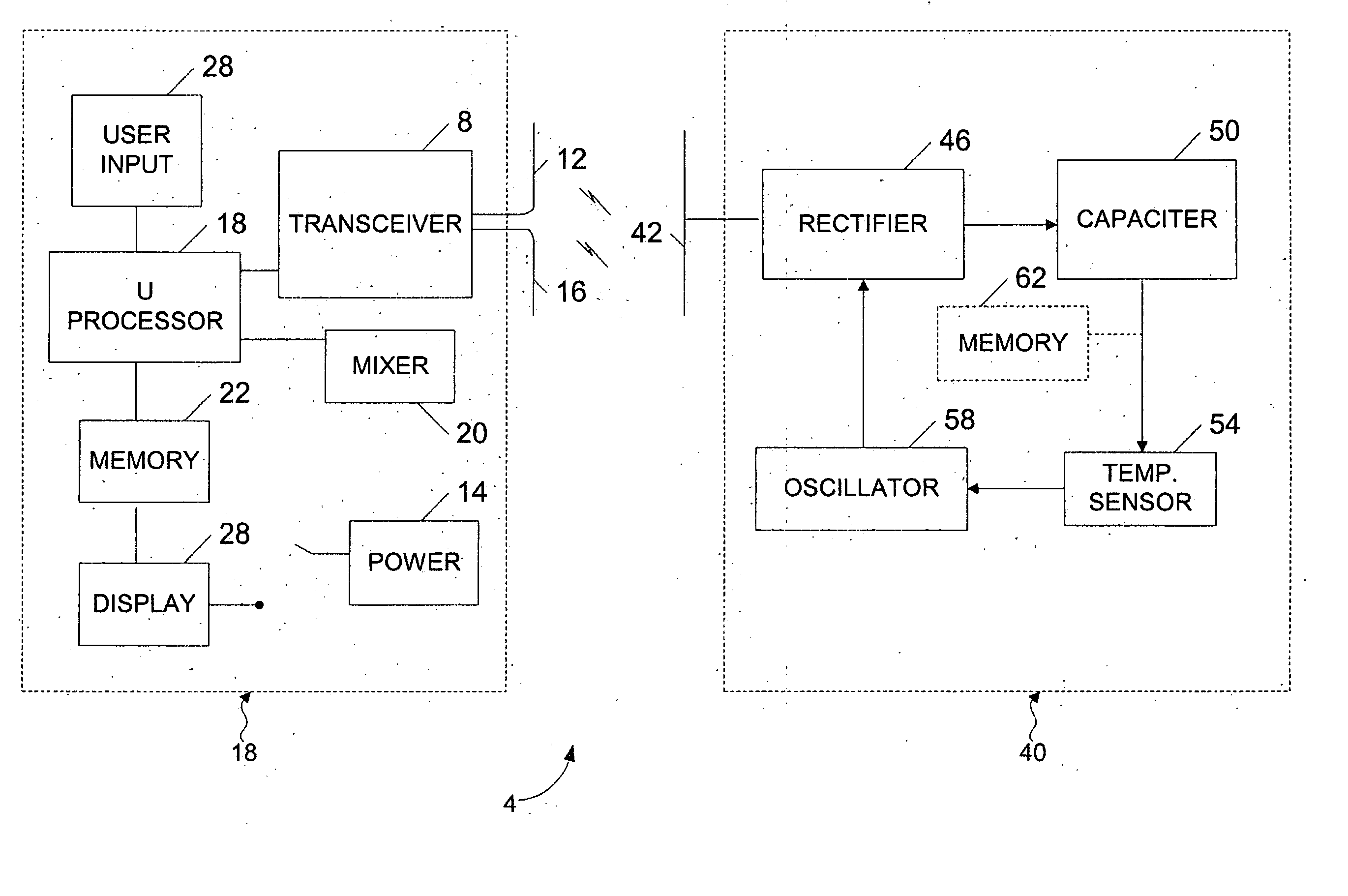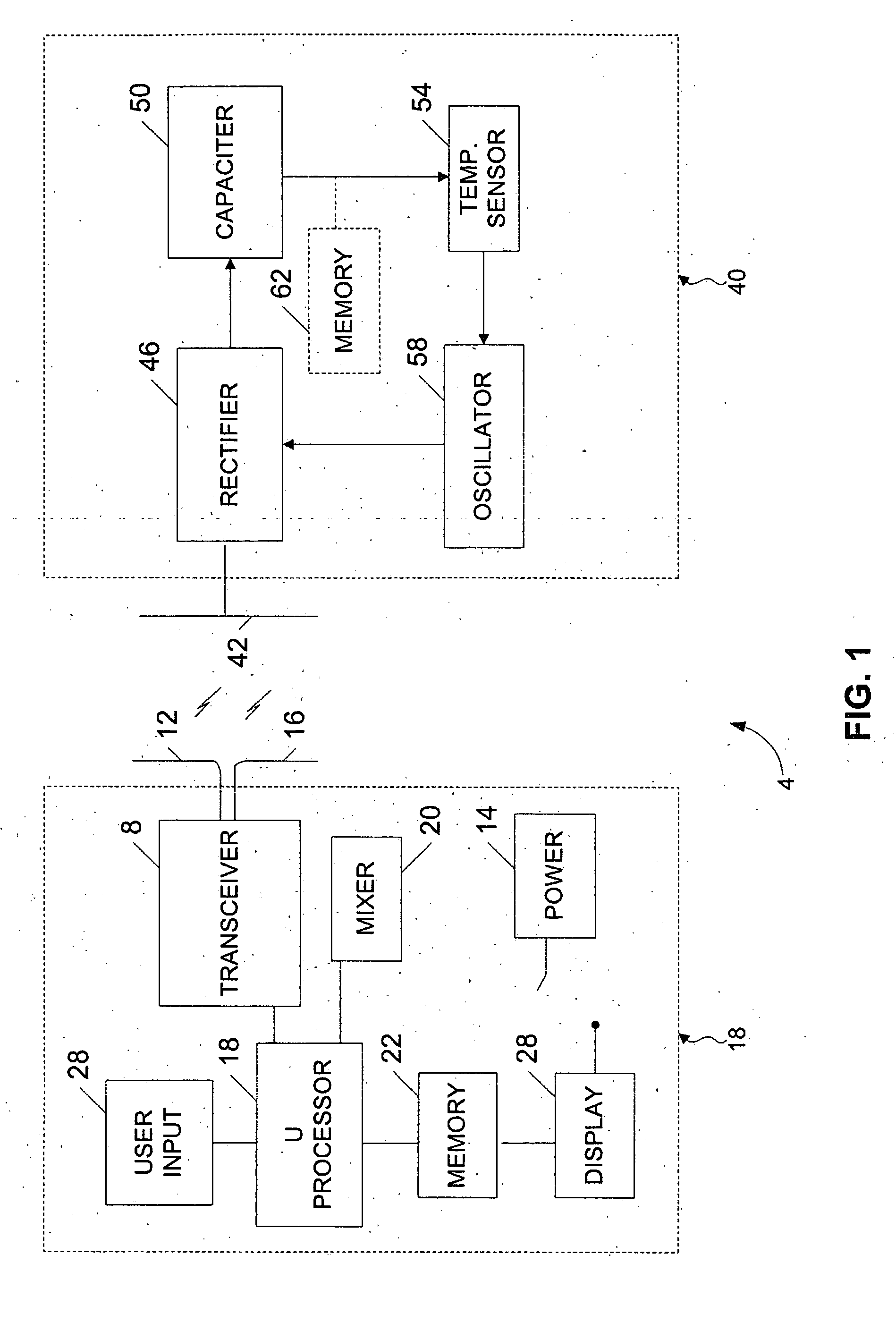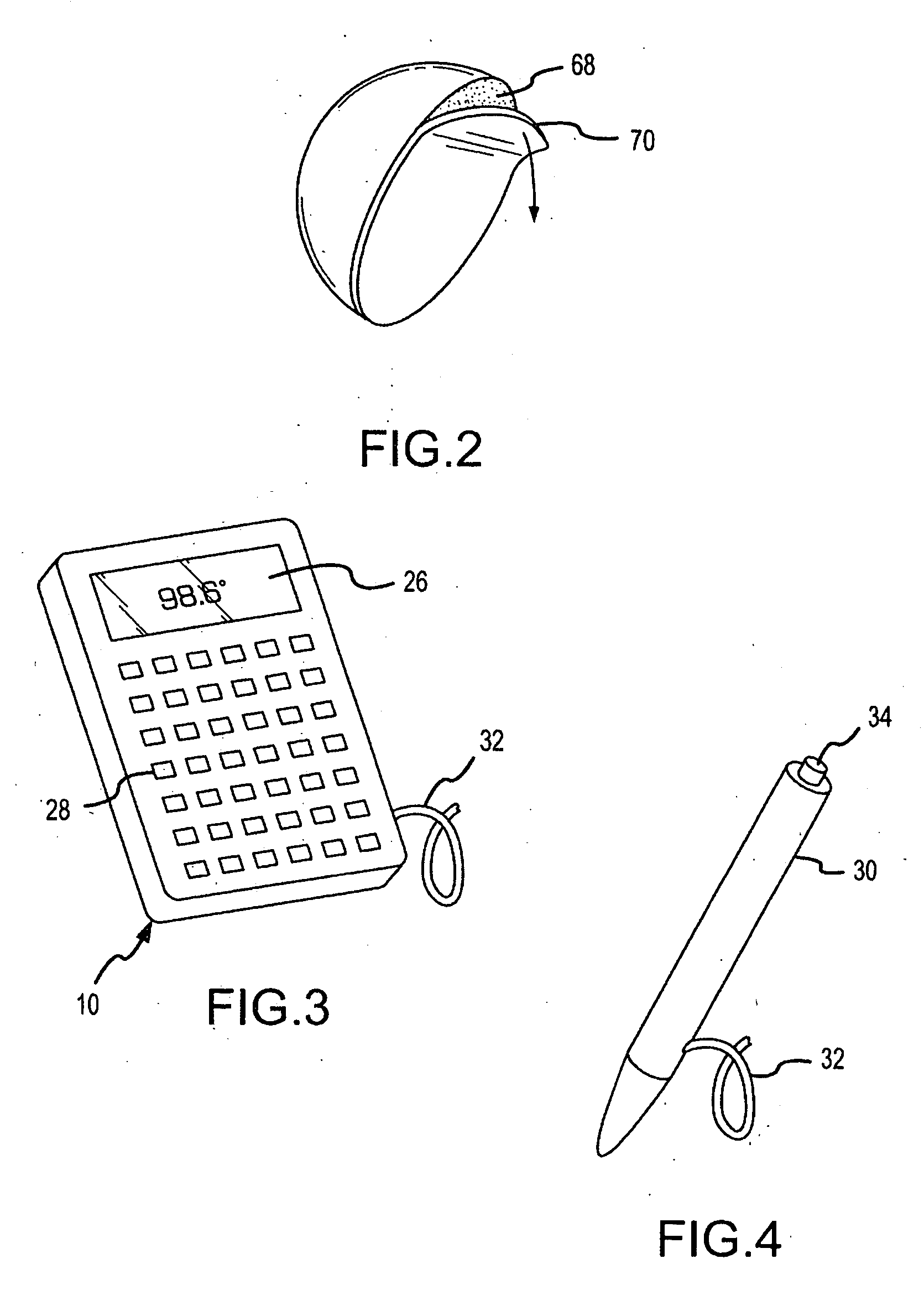Non-contact patient temperature measurement
- Summary
- Abstract
- Description
- Claims
- Application Information
AI Technical Summary
Benefits of technology
Problems solved by technology
Method used
Image
Examples
Embodiment Construction
[0039] Disclosed herein is a system and method for non-contact monitoring of a patient's temperature wherein temperature data is transmitted over an air interface. In this regard, a subject (e.g., patient) may wear a temperature sensor that, upon request, transmits the temperature of the patient to a reader over the air interface. More particularly, the system and method utilize a transponder sensor that is able to provide a patient's temperature upon receiving an interrogation signal from a portable reader / probe disposed within a predetermined range of the sensor. In one particular application, the system allows medical personnel, using a portable hand-held reader, to quickly and conveniently measure a patient's temperature without disturbing the patient or raising sanitation concerns.
[0040]FIG. 1 illustrates one embodiment of a radio frequency temperature sensor (RFTS) system 4 that makes use of radio frequency propagation to measure patient temperatures. As will be discussed her...
PUM
 Login to View More
Login to View More Abstract
Description
Claims
Application Information
 Login to View More
Login to View More - R&D
- Intellectual Property
- Life Sciences
- Materials
- Tech Scout
- Unparalleled Data Quality
- Higher Quality Content
- 60% Fewer Hallucinations
Browse by: Latest US Patents, China's latest patents, Technical Efficacy Thesaurus, Application Domain, Technology Topic, Popular Technical Reports.
© 2025 PatSnap. All rights reserved.Legal|Privacy policy|Modern Slavery Act Transparency Statement|Sitemap|About US| Contact US: help@patsnap.com



